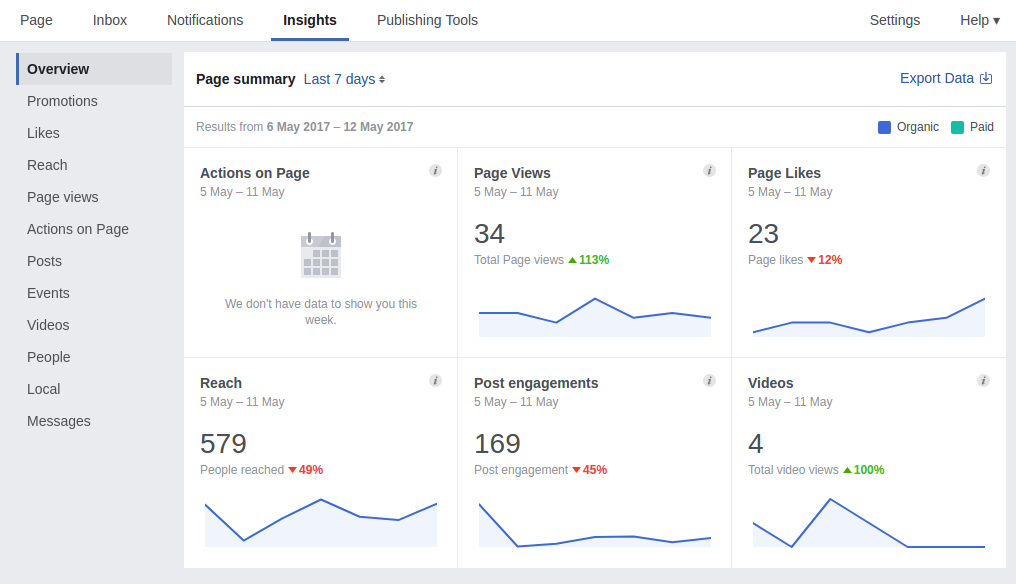Social Media Audit
Social Media Audit should be an essential part of strategy for any brand which is promoting itself through social media networks. Auditing social media helps you understand your brand’s strengths and weaknesses on social media. And not just that but also it helps keep things on track. It helps you to do reflections on the essential aspects of your business, for instance WHO you are, WHAT you are into and WHY you are into.

Whether you are a big brand with tons of budget or a bootstrapped startup, doing an auditing social media will help you to better control your social media marketing and the returns from it.
6 Easy Steps To Do Social Media Audit
Here are six simple steps to audit social media for your business:
1) Identify Business and Social Media Goals
Identifying your business goals which you want to achieve through social media should be the first step you take to audit social media. Only when you are clear about the goals, you can create a well-defined social media plan and execute the same. Isn’t it?
Some of the business goals which you want to achieve through social media can be (you may identify more as per your business):
- Generating leads
- Generating sales
- Costumer research
- Generating buzz about new products/services
- Building awareness about your brand
Next come your social media goals, wherein you measure the progress of your social media channels. Your social media metrics, and whether your social media communities are growing or not, are a part of this area.
Social Media Goals
Some of the social media goals can be:
- Increase in social media followers
- Increase in overall reach among the followers (impressions, number of people who saw your content etc.)
- Increase in engagement with followers (likes, comments, shares, retweets etc.)
- Increase in Click Through Rate (CTR) on social media links
- Increase in referral traffic from social media
- Increase in leads/sales from social media
Once you have defined your business and social media goals, you can move on to the next step.
2) Identify Social Media Channels
Make a list of all the social media channels you already own. Note down following aspects of these channels:
- Channel Name (for example: Facebook, Twitter, LinkedIn, Pinterest, Instagram, Snapchat etc.)
- Channel Address (for example: Facebook.com/YourBrandName, Twitter.com/YourBrandName etc.)
- Channel Goals
- Channel Followers
- Content Type
- Content Frequency
- Timing of Content Updates
- Percentage or Amount of Referral Traffic
A sample social media audit spreadsheet can be accessed here.
This will give you a fair amount of idea that how you are performing across different social media channels. You will get to know where you are performing well or poor and where you need to plugin the loopholes. This is also beneficial in a way that you can allocate resources and time to manage each of the channels.
Since in the step up where you identified your business and social media goals, you will also get to know whether you want to trim out any social media channels which are not going to give you any returns or whether you need to add any new channels to this mix which can match your business goals.
Also, by integrating your website with Google Analytics, you can see which type of content is bringing in the maximum referral traffic so that you can increase the frequency of that type of content. Apart from that you should also see at what time slots your content performs better on social media so that you can stick to those time slots.
Overall this exercise will help you to plugin the loopholes and streamline your social media marketing.
3) Study Audience Insights
Studying audience insights is a very essential component for any business. To sell well, you need to understand your customers. Lots of research goes these days in understanding the psychology of customers, their behaviours, and choices so that businesses can streamline their offerings and advertisements according to that.
That is where the social media analytics comes into the picture. Each of the social media channels, be it Facebook, LinkedIn, Pinterest, Twitter, Instagram etc., offers native analytics which gives a fair amount of idea about your social media followers.
For example, on Facebook, you can click the insights button at the top of your company page (generally its direct address is facebook.com/YourPageName/insights), which will open a plethora of options to analyse your audience as shown in the following two screenshots.


Note down the age groups, gender distribution, location of fans, reach, page views, time when maximum people are online etc. to understand your audience better.
Similarly on Pinterest, Twitter, LinkedIn, or any other channel where you are operational, note down the important metrics and analyse your audience and their behaviour.
This exercise will help you in a long way to craft and update your social media content with the maximum effect.
4) Analyze External Social Media Chatter
Since social media by default is open in nature as anyone can create a profile and share updates as per their own choice and liking, so it is very important for brands to analyse what is being talked about them online. And you should not just track what people are talking on social media about your business specifically or your industry in general but also what your competitors are doing on social media. And this is not the end. You should also know who are the influencers in your industry and what do they like to talk about on social media.
So these are the three areas you must track to stay on the top. Here is what you should generally track in these three areas:
- Listening to People:
How many people are praising your business and how many are bad mouthing it. You should amplify the ones who are praising you (by resharing, retweeting, featuring them on your blog, etc.) and resolve the issues which lead to bad mouthing (by internal coordination with product/services team if there is the issue, never ignore but listen and act upon the advice of the customers who have genuine grievances). - Tracking the Competitors:
Make a list of all your competitors and their social media channels. Track all their metrics in a similar way as you tracked your metrics in the “Identify Social Media Channels” step above. This will help you understand where they are performing better or poorer than you. You should amplify the areas in which you are better than them and improve the areas when you are weaker than them. - Identifying the Influencers:
Identify as many influencers in your industry as you can on social media and make a list of them channel wise. Follow them on social media and track what kind of content they like to share, on what topics do they like to debate or share their views. Don’t forget to interact with them and occasionally curate their content on your social media channels. This will help you to build relationships with them and create content which is as per their liking and which they can spread in their network, thus bringing in lots of free traffic to your website.
You must be thinking, that is fine, listening to and tracking your customers and competitors on social media is all good but how actually to do that? The answers lies in the next step.
5) Social Media Audit Tools
The most basic and my favourite way of doing social media audit is the manual search on Google and on different social media channels. You can track all the information required step-by-step this way.
But some of the essential social media audit tools which you can use are:
- Native Analytics Tools:
Facebook Analytics, Pinterest Analytics, Twitter Analytics, LinkedIn Analytics, Instagram Insights - Free External Analytics Tools:
Google Analytics, Tweetreach, FollowerWonk, Likealyzer, Websta, Talkwalker - Paid External Analytics Tools:
Rival IQ, SEMrush Social Media Tool, Social Bakers, Social Report
6) Social Media Audit Report
This is the final step in your social media audit. Joining all the threads together of the previous steps, you will get a comprehensive social media audit report of your business.
You should also look at your current expenses of marketing using social media. Also measure how much of your social media efforts and the referral traffic which you are getting is actually converting into sales? Are you generating profit from your social media efforts? How much reach you are getting of your content among the target audience (this is the qualitative aspect of ROI)?
Answer these questions so that you can remove the overheads, and focus only on the essentials. This will also help you to scale, as you know that certain areas within our social media outreach are producing better results, you can put more money over there and similarly you can cut the budget from the areas which are not producing any results.
Conclusion
I am sure this article will help you in a long way to streamline your social media efforts. To remove the junk and to focus on the essentials and thus ultimately to contribute to your business. If you like this article, feel free to share it. Also if you have any questions or ideas, do share in the comment box below.



















Hi Harmanjit,
Thank you for including TweetReach by Union Metrics in this piece— we appreciate it!
– Sarah A. Parker
Social Media Manager | Union Metrics
Fine Makers of the Union Metrics Social Suite & more
Hi Sarah, it’s a useful tool, so had to mention that over there. Glad you noticed it.